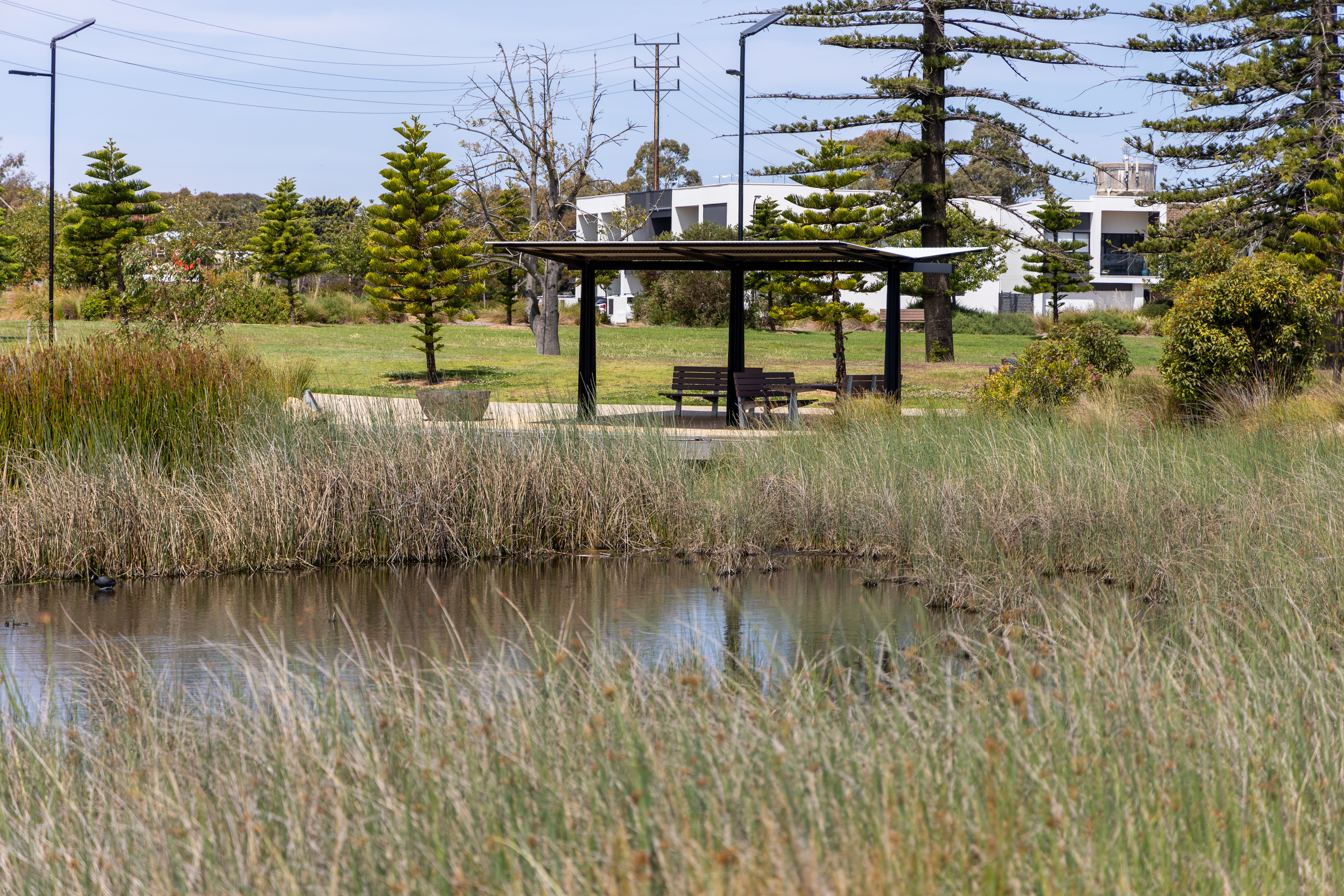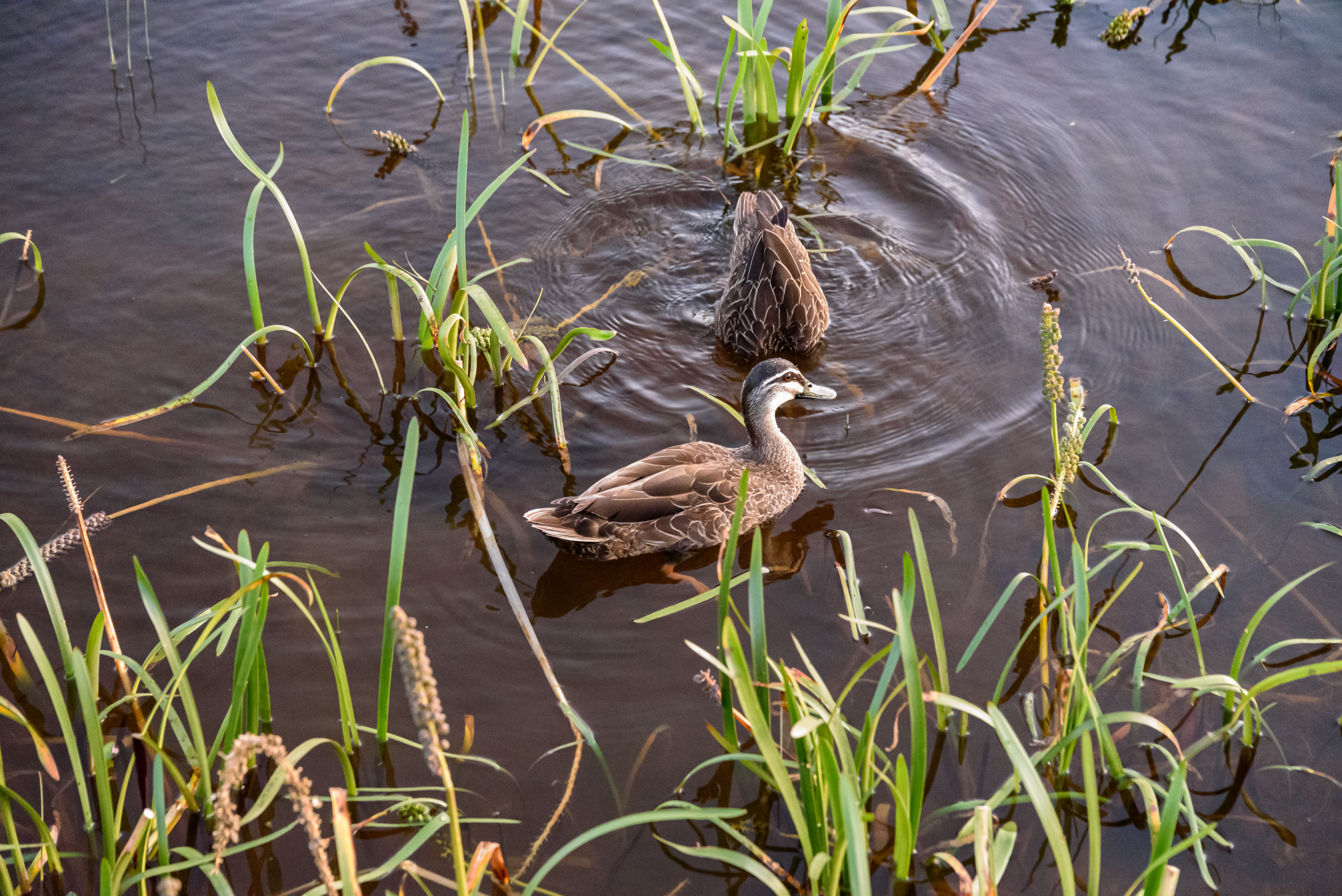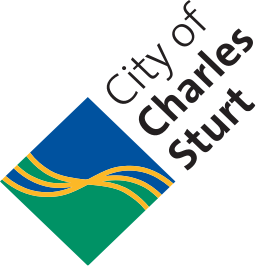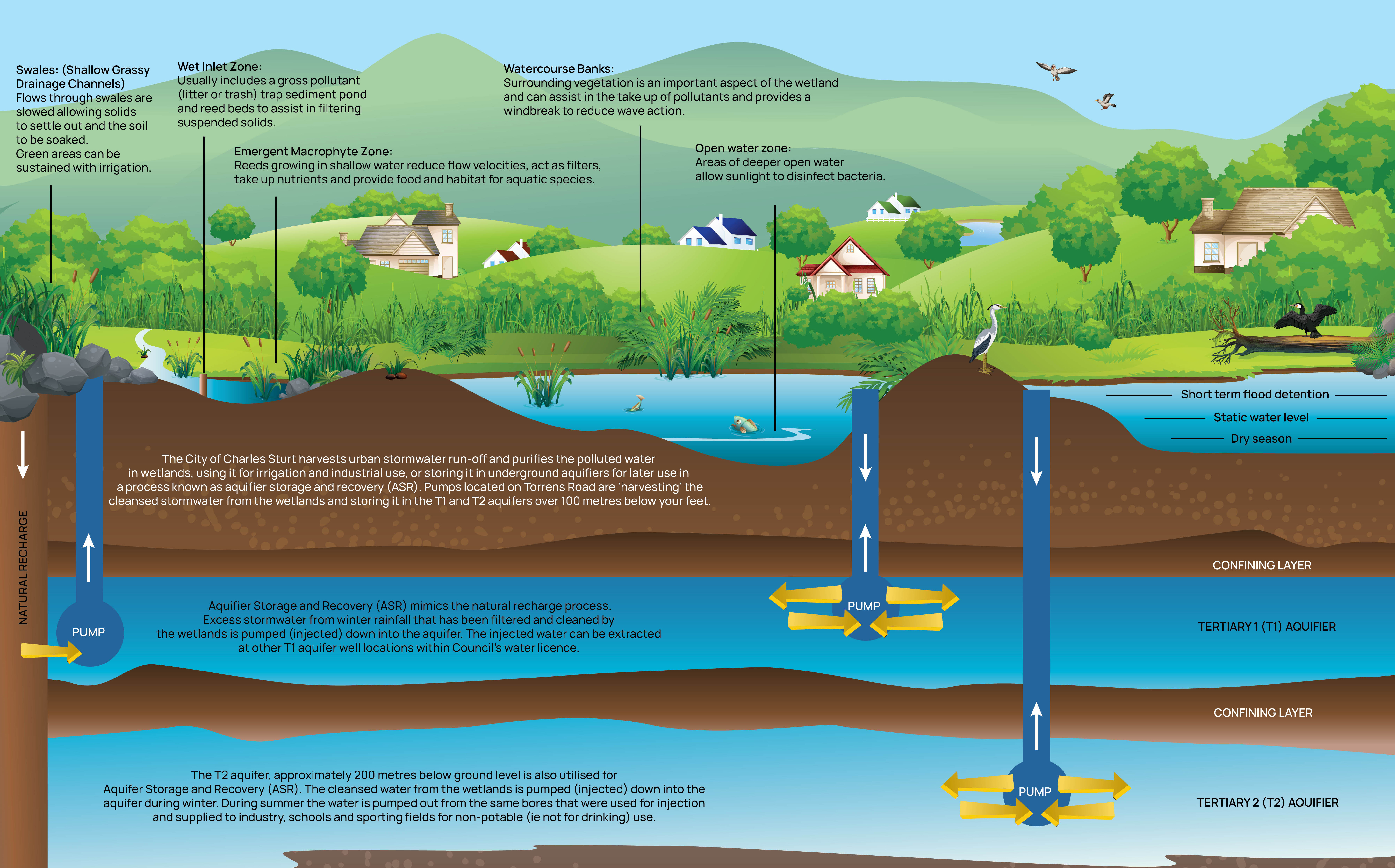
The City of Charles Sturt has a number of open space wetlands across the city that provide multiple benefits to our local community and surrounding areas. We have over 11 hectares of wetlands which are located in St Clair, Cooke Reserve in Royal Park and along Old Port Road. The wetlands were constructed from 2010-2015 to treat urban stormwater and reuse for irrigation, residential and commercial purposes.
Our wetlands harvest stormwater from local catchments as well as the River Torrens. They naturally clean and filter the stormwater before storage in the Tertiary T1 and T2 aquifers over 100m below ground for later reuse.
In the urban environment, surfaces such as roads, roofs and paved areas, result in more stormwater run-off than in the natural environment. Polluted drainage that flows from urban areas, can threaten our waterway and marine environments.
Our constructed urban wetlands mimic the function of natural wetlands to remove contaminants for safe reuse and discharge. The wetlands naturally remove nitrogen, phosphorous, sediment and pathogens, reducing pollution and enabling water storage and recovery in the aquifer. We use native plants that are suited to this engineered water treatment process. The wetlands have also created an ecological habitat for a variety of animal species, including birds.

Wet and dry periods are common in natural wetlands. Dry periods can help with plant and soil health and control of invasive species and bacteria. In dry months, it is natural for the wetlands to dry out as stored MAR water and native groundwater is pumped through lilac/purple pipes (City of Charles Sturt recycled water) to irrigate green spaces across the City of Charles Sturt. Natural drying of the wetlands reduces the water lost to evaporation, leaving more for irrigation and other purposes. Our garden team regularly monitor to help look out for the health of the wetlands.
Groundwater is recharged in natural systems, known as aquifers, when rainwater filters through the soil profile into permeable rock strata below. Aquifers can store enormous volumes of water. ‘Native’ groundwater from our aquifers is a climate-resilient and low cost natural water resource that replaces River Murray or desalinated water. In some areas, the EPA has temporarily banned shallow groundwater use less than 50 m below surface while industrial remediation is taking place.
For more information about wetlands in Adelaide visit Green Adelaide - Adelaide's best wetlands.
Other references:
The St Clair wetlands are located on the former Cheltenham Racecourse site and are made up of 6 hectares of wetlands with cascading weirs, inlet ponds and miniature wetlands.
Gross Pollutant Traps are located at entry points to the wetlands and filter out large debris.
The St Clair wetlands provide an opportunity to bring people close to water in nature and understand the water cycle in urban environments.
Follow the 2.1km walking circuit around the St Clair wetland and enjoy spotting the many different species of animals that inhabit the area or just sit, relax and enjoy the view.
St Clair Wetlands Walk | Walking SA
St Clair Reserve Wetlands and Cascades Reserve | City of Charles Sturt
Water Sensitive SASt Clair Wetlands, St Clair - Water Sensitive SA
The wide median strip on Old Port Road offers an opportunity for ecologically sustainable stormwater management. Prior to the construction of the wetlands many local properties were affected by regular flooding events.
Stormwater from the surrounding catchment and excess river flows from the River Torrens is treated in 1 hectare of wetlands along Old Port Road.
In addition to flood mitigation, the wetlands on Old Port Road have enhanced the natural environment and local biodiversity.
Partially treated water from Old Port Road wetlands is diverted to biofilters at Cooke Reserve. This water flows through wetlands at Cooke Reserve and West Lakes Golf Course.
The Cooke Reserve wetland is a beautiful natural space that is utilised by the community for recreation and leisure. The site is home to a wide range of wildlife and is a great place for a picnic, bbq or bike ride.

